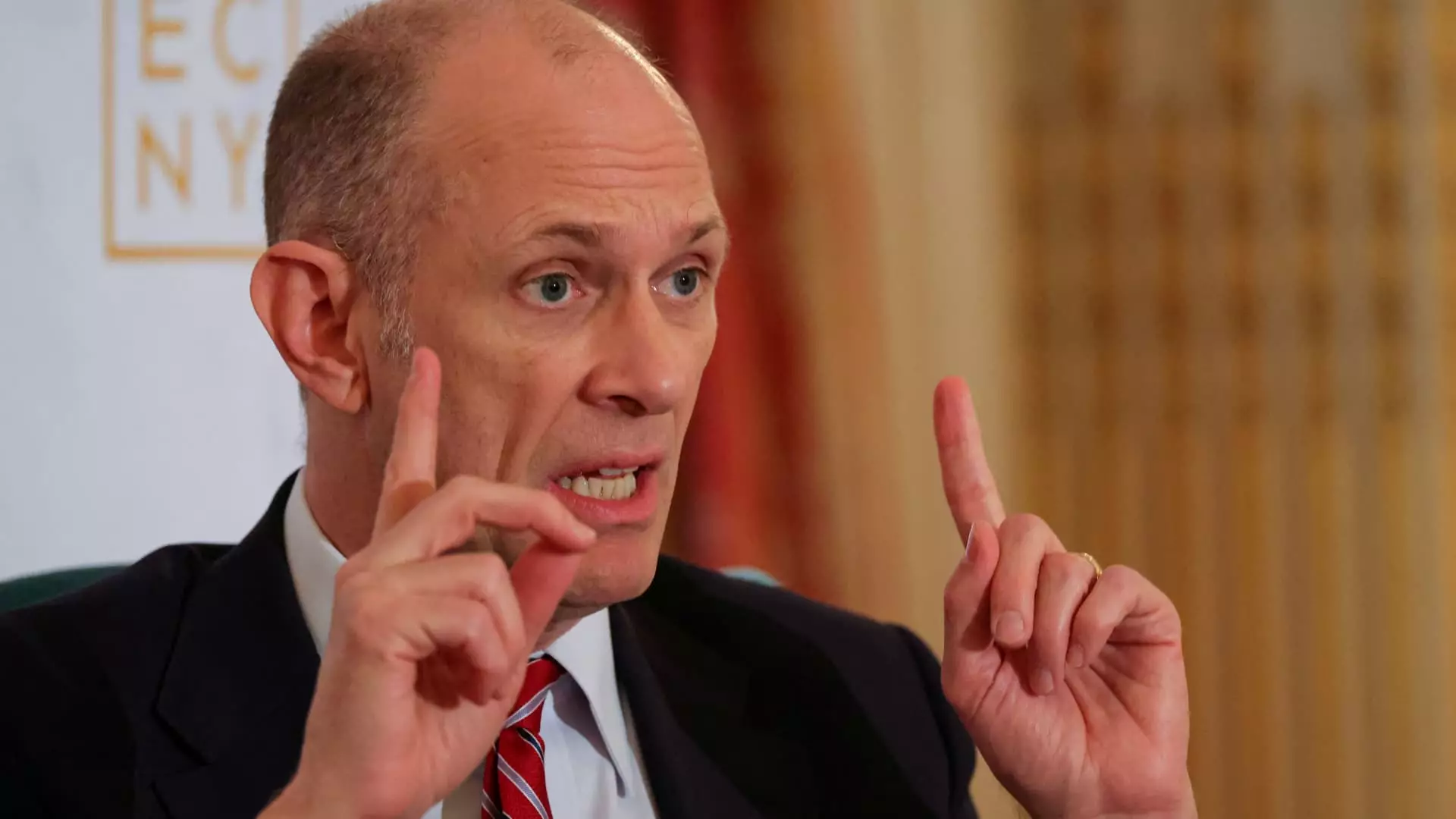Austrian Goolsbee, President of the Chicago Federal Reserve, has recently drawn attention to the adverse effects of President Trump’s escalating tariff threats on economic policy, particularly as they relate to interest rates. This situation is not simply an economic challenge; it is a glaring example of how political maneuvering can derail the delicate balance of financial stability. Goolsbee’s insights reveal a reality that is often glossed over in political discussions—the consequential relationship between trade policy and the Federal Reserve’s monetary strategies.
Tariffs are not just numbers on a balance sheet. They represent a fundamental shift in economic dynamics. In an era where globalization underpins almost every aspect of trade, imposing steep tariffs can skirt on the edge of self-sabotage. Goolsbee’s observations underscore a rising concern: The imposition of tariffs could unleash stagflation—an unholy mix of stagnant economic growth coupled with soaring inflation. This is the very scenario that keeps central bankers awake at night; it is the specter of economic malaise haunting the corridors of power.
The Uncertainty Looming Over Interest Rates
The uncertainty surrounding tariffs isn’t merely an abstract concern for economists. As Goolsbee pointed out during his interview, trade policy chaos can inhibit the clarity with which the Federal Reserve decides on interest rates. Federal Reserve officials are institutionally trained to tread carefully, avoiding entanglement in political issues. Yet, they cannot ignore how trade tensions escalate market volatility, complicating their primary responsibilities of managing inflation and employment.
Currently, Fed officials find themselves in a precarious situation. While many anticipate interest rate cuts, the ambiguity from the Trump administration complicates any forecasts. Goolsbee’s hesitance to take immediate actions reflects a wider sentiment of instability; the Fed may wish to lower rates, but how do you do that credibly while facing unpredictable tariffs? This anxiety isn’t merely economic chatter; it shapes real lives and businesses across the nation.
The Fallout of Tariff Threats
President Trump’s recent announcement of a potential 50% tariff on European Union products sent shockwaves through the market, sending investors scrambling as they assessed the new risks. This jingoistic approach to trade helps to energize a particular voter base but jeopardizes economic viability for many American consumers and businesses. Apple’s products, likely subjected to a 25% tariff, serve as a case study of how these policies trickle down to harm everyday Americans, potentially raising costs for products that form part of their daily lives.
Worse, the optics of such announcements create a perception of instability. When central banks like the Fed must operate in environments riddled with uncertainty, they are forced into reactionary stances rather than proactive strategy-building. This environment inhibits economic growth and tightens the noose around job creation and wage growth, which disincentivizes investment decisions across multiple sectors.
An Optimistic Perspective Amidst Gloom
Despite all the turbulence, Goolsbee remains firmly optimistic about long-term economic prospects. His belief that the economy can stabilize, and conditions can improve, reflects a resilient spirit that is often lost in the clamor of fear. The idea that rates could be a fair bit lower in the next 10 to 16 months provides a glimmer of hope, sparking discussions on potential recovery rather than despair.
However, that optimism must be matched with a demand for coherent policy—a call that resounds more strongly in the minds of those who understand the economic landscape. While Trump’s hardline stance appeals to certain demographics, lasting economic health requires a nuanced approach to trade that fosters collaboration rather than division.
Goolsbee’s predictions hinge upon the Fed’s ability to analyze real impacts and respond appropriately—something inherently difficult when policy makers are chained to the whims of political agendas. It stands to reason then, that a balance must be struck, one that aligns fiscal policies with the greater economic good.
The electoral theater often oversimplifies complex monetary issues, treating them as auxiliary parts of a much larger narrative. If we genuinely wish to see continued economic growth, a re-evaluation of how we approach trade and tariffs is essential. The stakes could not be higher; fragmented policy is not merely a political failure but an economic crisis waiting to unfold.

Leave a Reply